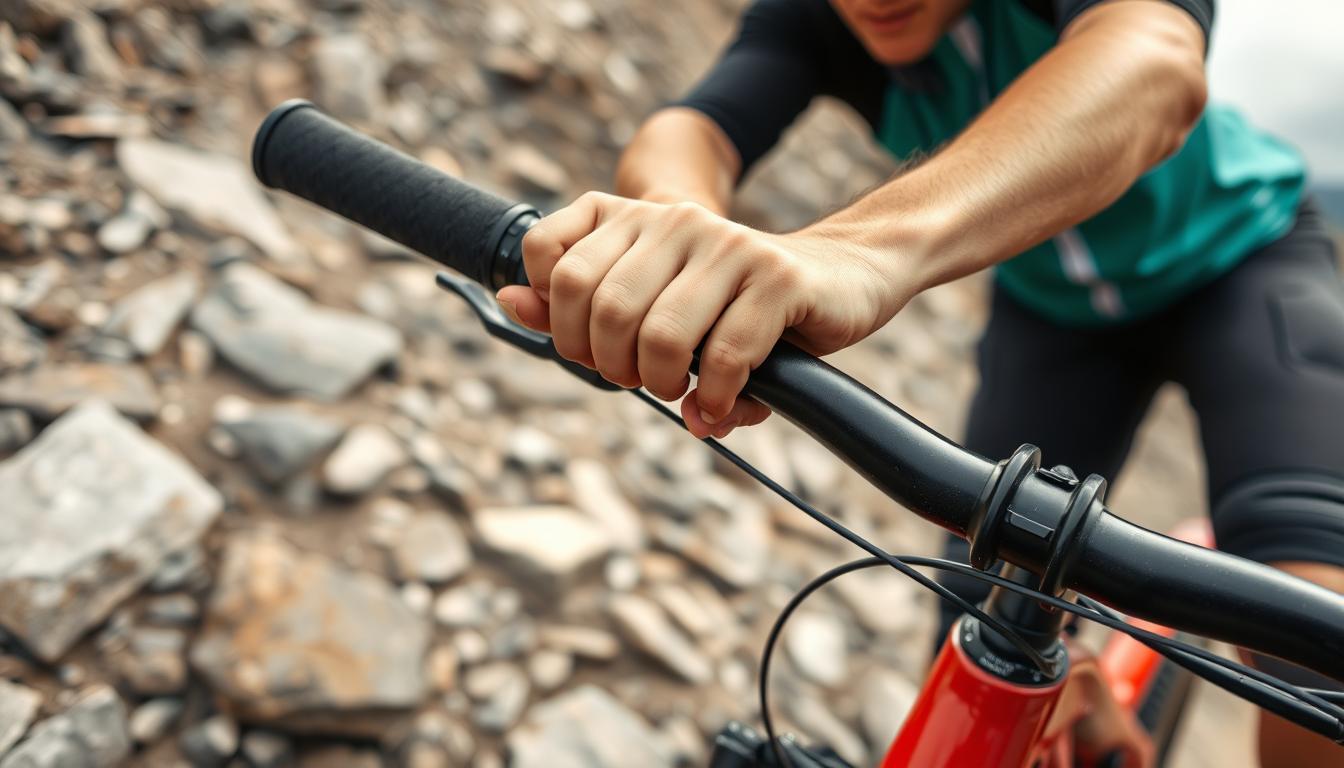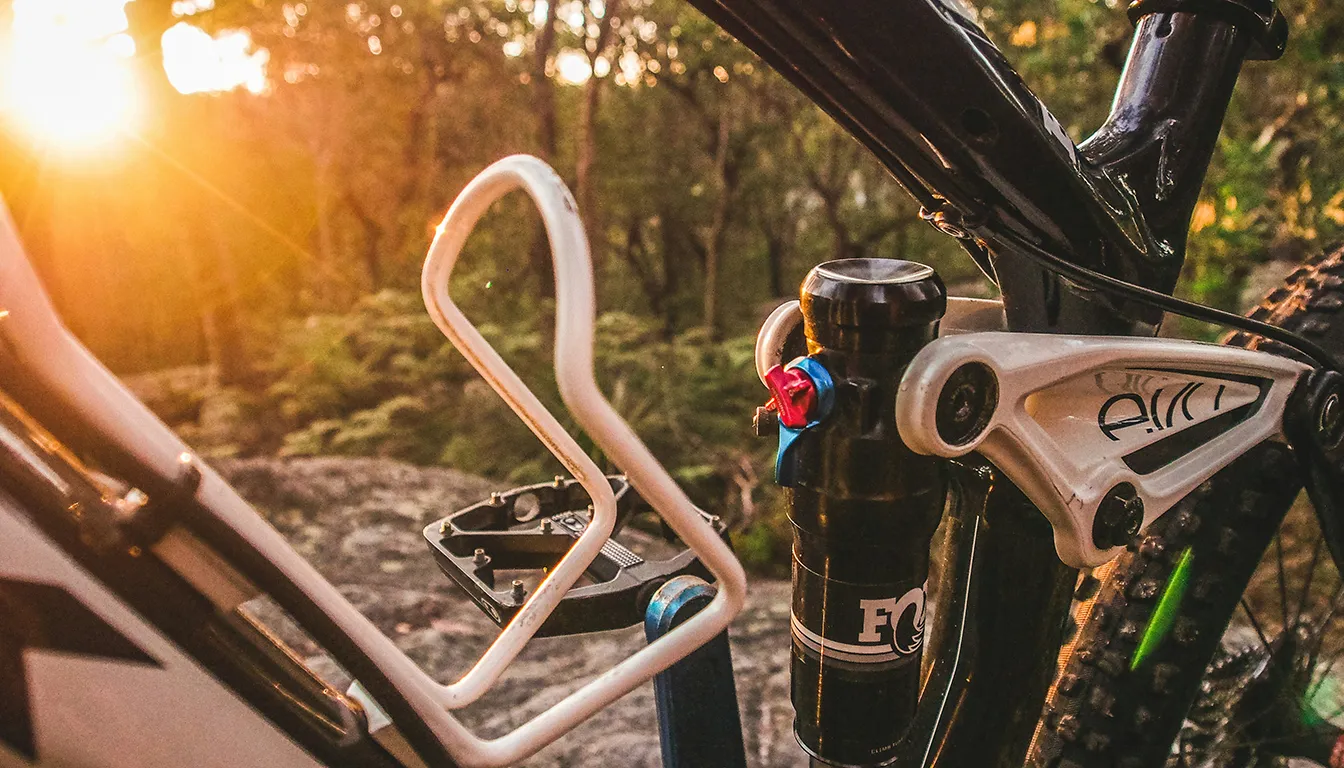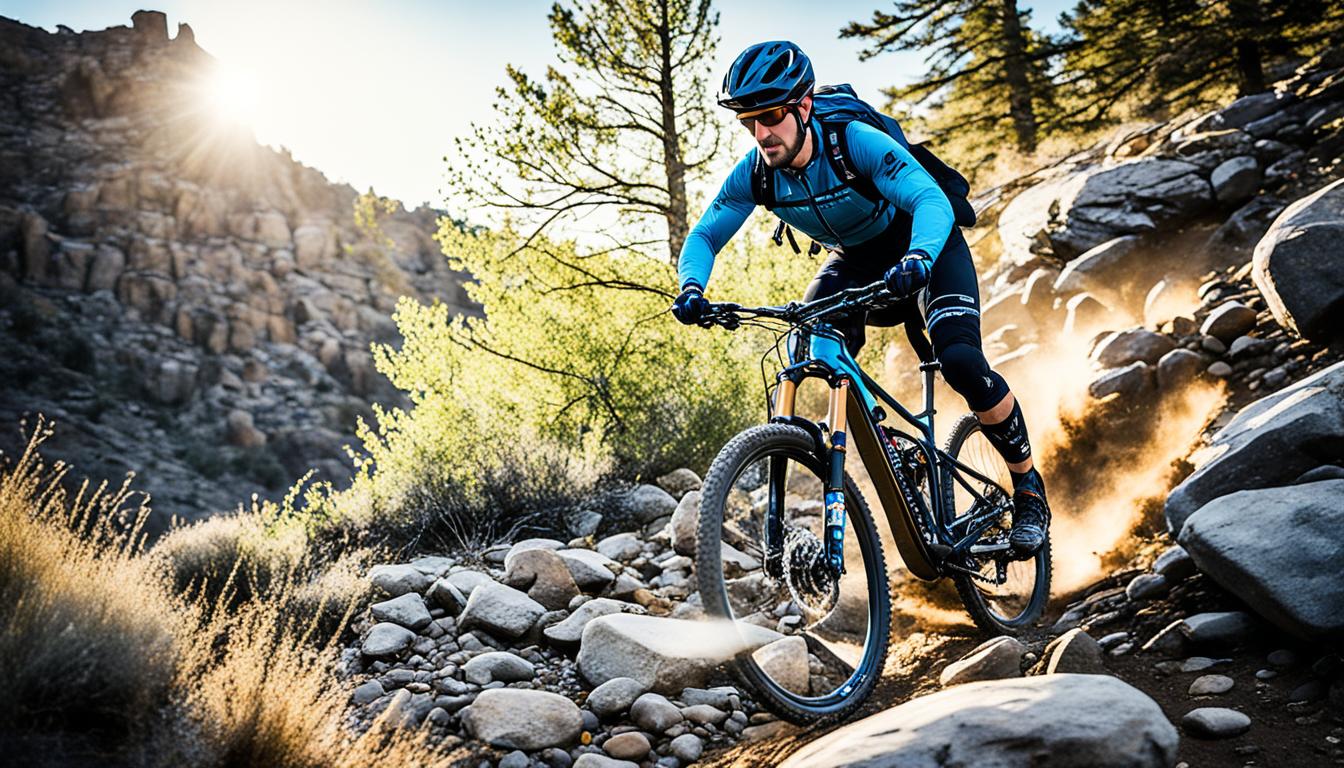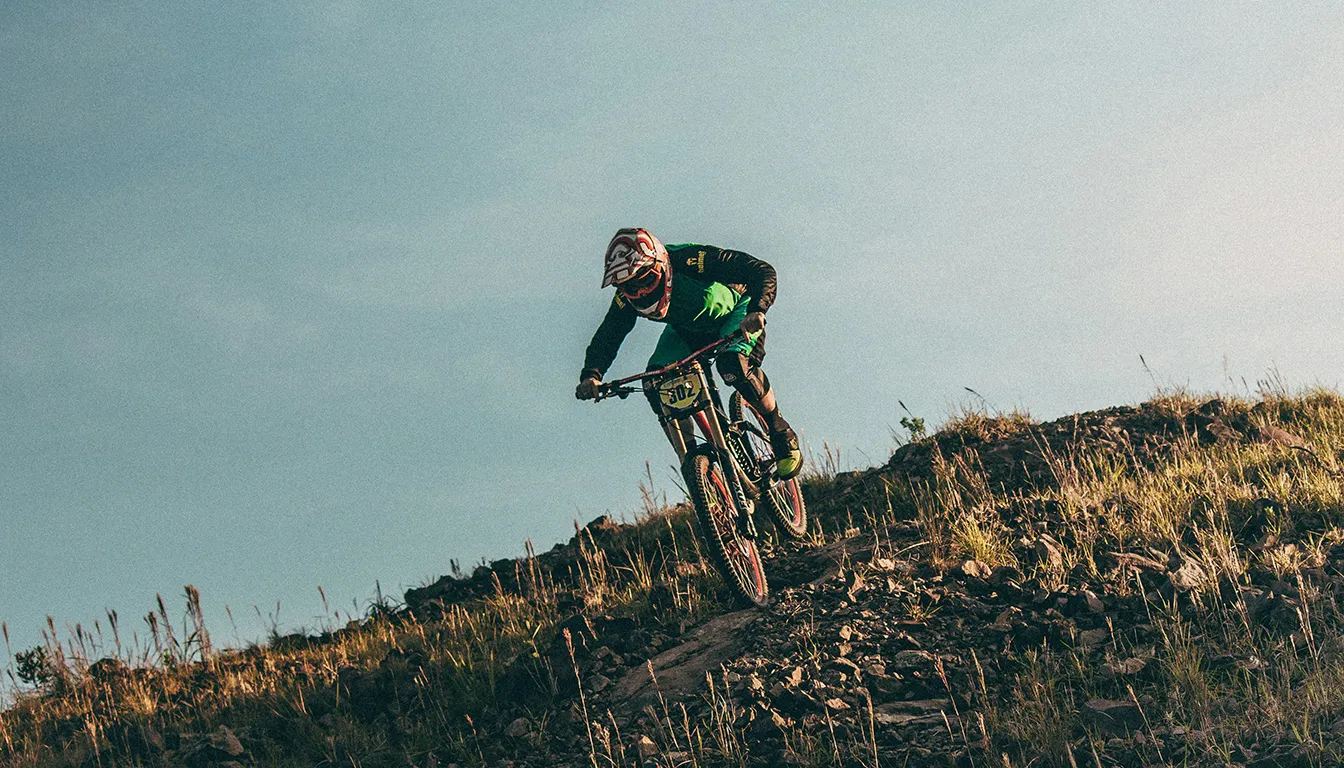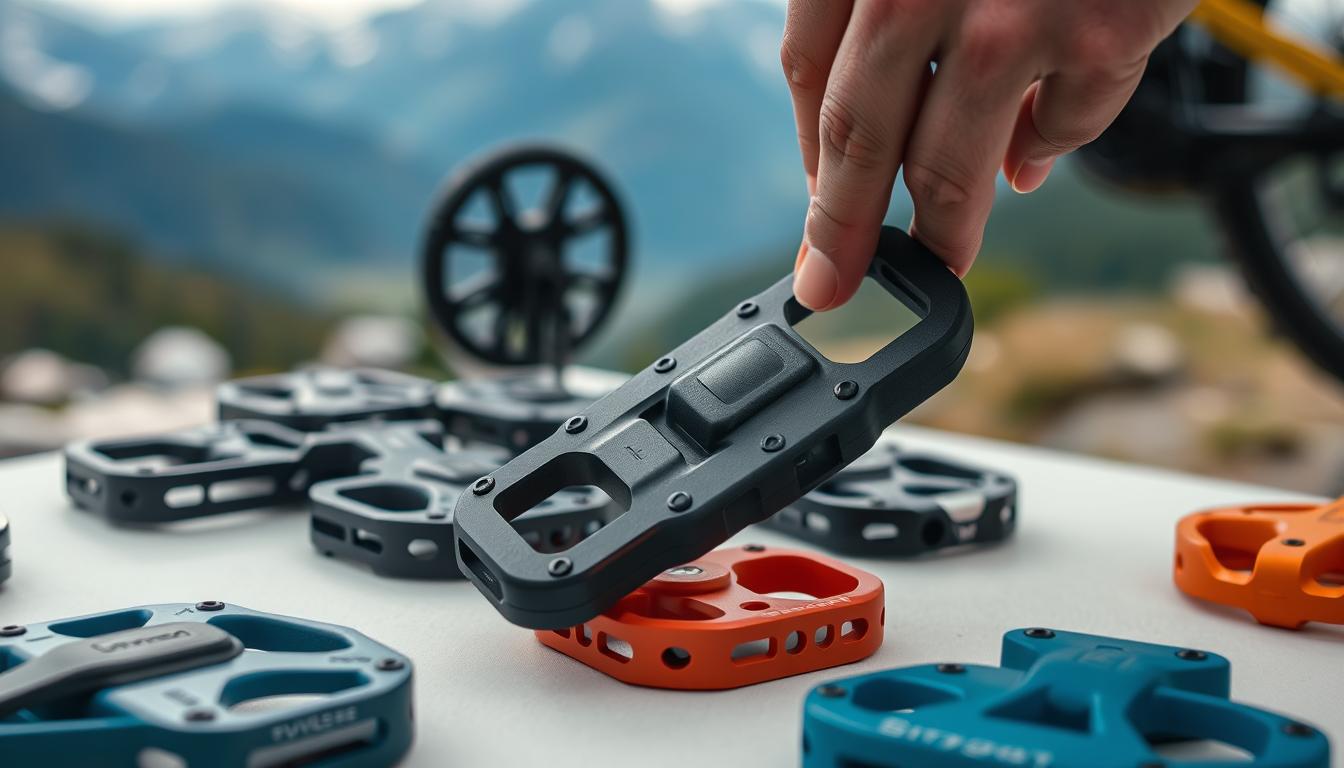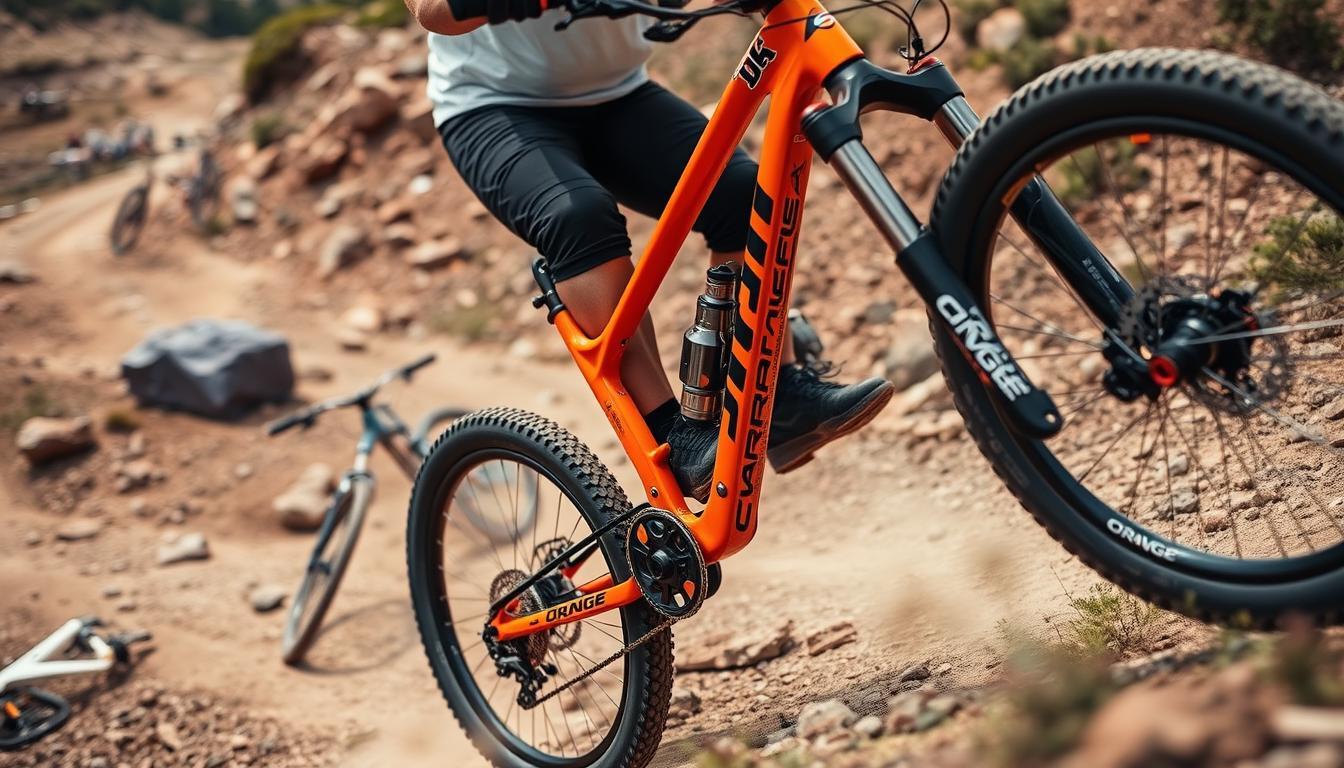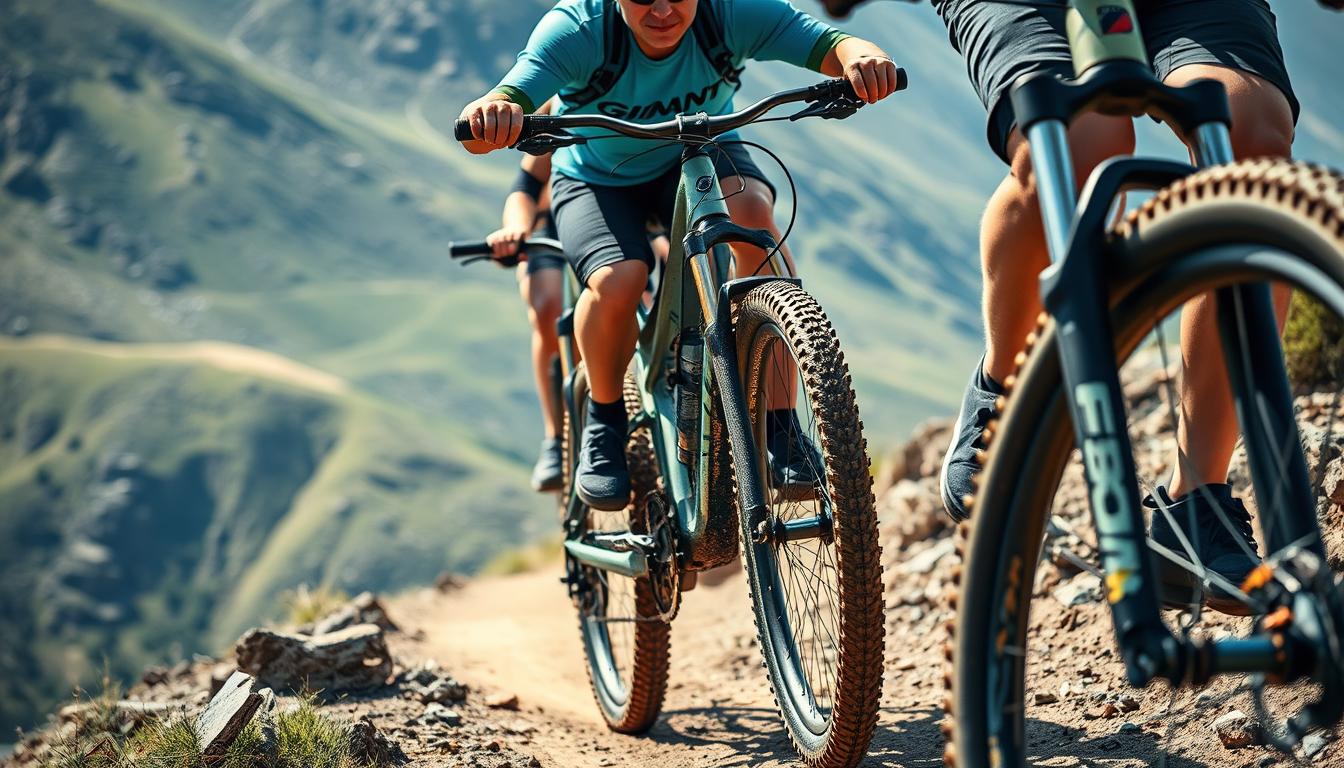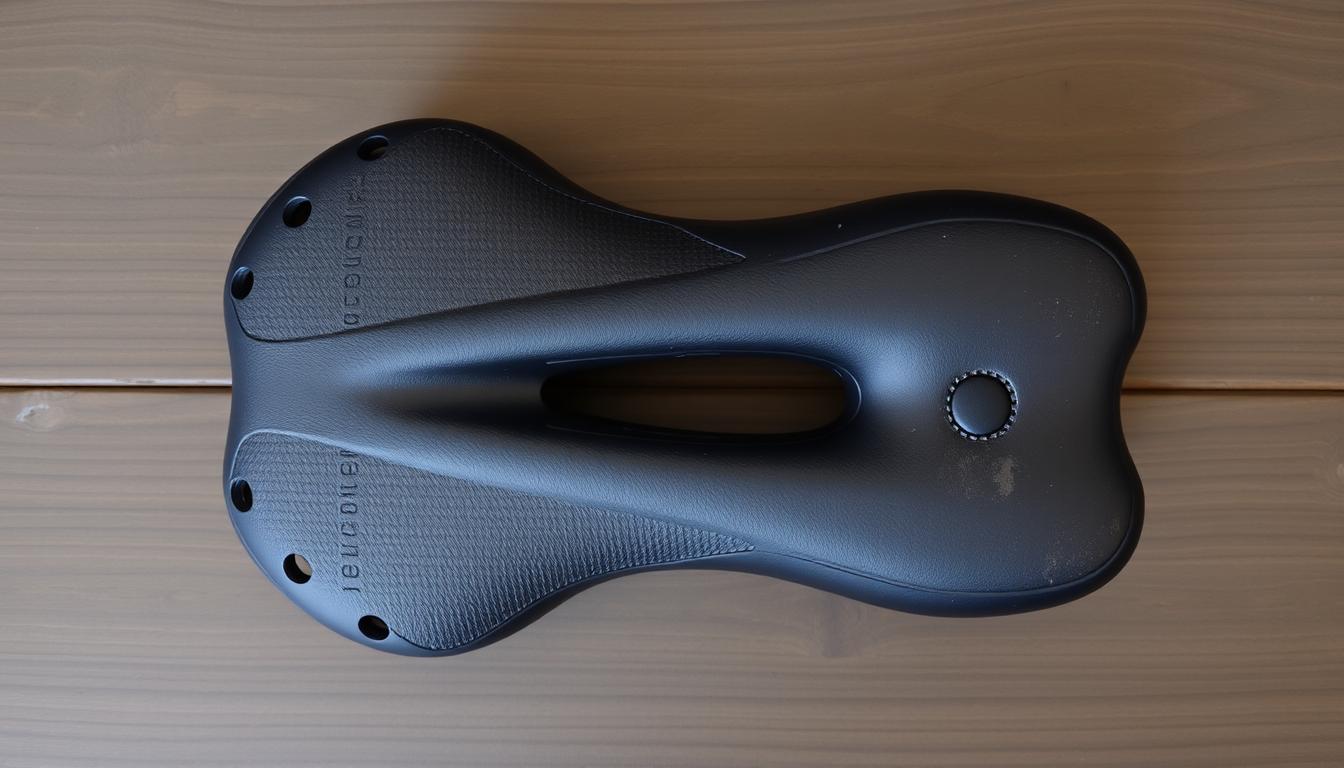Finding the right handlebars is key for a great mountain biking experience. They ensure better handling, control, and comfort. Many don’t think much about changing their stock handlebars. However, the right ones can really improve your trail rides. We’ll look into how to pick the best handlebars, based on your riding style, the terrain, and handlebar size.
Nowadays, handlebars are wider, between 700mm and 800mm, especially for trail and downhill biking. A wider handlebar helps with stability. It’s important to think about what you need. Also, choosing between materials like aluminium and carbon fibre is important. Aluminium is durable and less expensive, while carbon fibre is lighter and absorbs vibrations better. Let’s dive into what makes a good handlebar choice to enhance your rides.
Understanding the Importance of Handlebars on Your Mountain Bike
Handlebars are key for a comfy mountain bike fit and smooth ride. They affect the bike’s steering and comfort. The importance of handlebars is huge as they connect the rider and bike.
For those who like bold riding, wider handlebars offer better handlebar control. They provide more stability and easy turns. Riders on trails prefer bars about 800 mm wide for a good grip. On the other hand, narrower bars are great for cross-country fans. They allow for quick moves, especially uphill. This shows how handlebar size matches different biking styles.
Handlebars’ shape also affects your ride. They come with various degrees of backsweep and upsweep. These angles help with your posture and control. It’s important to choose based on your style and where you ride. This way, you get the best riding experience.
Materials like carbon fibre make handlebars even better. Carbon fibre reduces vibration, which means less strain on your hands on rough tracks. Knowing about materials helps you pick the right handlebars for your adventures.
The Different Types of Handlebars for a Mountain Bike
Choosing the right handlebars for a mountain bike matters a lot. There are many types, each with their perks. Let’s dive into flat and riser handlebars, looking at their features and how they fit various riding styles.
Flat Bars
Flat handlebars are quite common on mountain bikes. They help you stay upright, which is great for going up hills. People who like cross-country rides often pick flat bars for their comfort. Plus, their narrow width makes steering more predictable on tough trails.
Riser Bars
Riser handlebars curve up at the ends, which lets you sit more upright. This makes it easier to manage the bike on downhill slopes or twisted paths. Trail riders who face rough terrain love them. Their wider design also adds to the bike’s stability for those who ride hard.
Key Factors to Consider When Choosing Handlebars for a Mountain Bike
Choosing the right handlebars for your mountain bike is crucial. Width, rise, sweep angles, and clamp diameter matter a lot. They decide how well your bike does and how comfy you feel riding it.
Width
Handlebar width really matters. They vary from 760mm to 800mm but most pick around 780mm. Wider bars give you better stability and control, perfect for downhill. But, if you’re into cross-country, you might prefer narrower bars for speed.
What you like also counts. Trying different widths is a good idea to see what fits. Changing width can help you handle tight spots and rough tracks better. Check out different sizes here.
Rise and Sweep
Handlebar rise varies a lot. You can find them from 0mm to 40mm. For steep paths, higher rise is comfy. And lower rise helps distribute your weight for climbing.
Backsweep usually is between 7° and 10°. An 8° angle is pretty common. The right rise and sweep help with wrist and arm position. This makes long rides more comfy. Getting these angles right gives you better handling and comfort.
Clamp Diameter
Clamp diameter is key for choosing handlebars. You’ll find mainly 31.8mm and 35mm options. The bigger 35mm is now more popular for its strength. It’s great for tough riding styles.
Make sure your stem fits your handlebar’s diameter. This ensures everything stays in place. Picking the right clamp diameter makes riding much better.
Materials Used in Mountain Bike Handlebars
Choosing the right materials for your mountain bike handlebars is key. The top picks are aluminium and carbon fibre, each with unique benefits. Whether you enjoy mellow rides or intense trails, understanding these materials is vital.
Aluminium vs Carbon Fibre
Aluminium handlebars stand out for their toughness. They’re great for bold riders who tackle rocky paths. With a weight of around 304g, these bars resist impacts well during rough rides. On the other hand, carbon fibre bars are lighter, weighing about 219g. This makes bikes feel nimble and quick on trails.
Thinking about cost, carbon fibre bars are pricier, often $100 more than aluminium. Yet, many find the spend worthwhile for the better ride feel and handling. Carbon fibre helps smooth out bumps, making for a more comfortable ride.
Durability and Weight Considerations
While carbon fibre excels in ride feel and is lighter, it’s not as tough as aluminium. Aluminium is better for those who need strong, long-lasting parts. Carbon fibre, though, reduces vibration and eases hand fatigue but is more prone to damage.
Riders have to decide which handlebar material benefits them the most. Carbon fibre bars are becoming popular for their performance perks. They reduce trail buzz and enhance comfort, showing a shift in what cyclists value most in their gear.
Conclusion
Choosing the right mountain bike handlebars is key for a good ride. They ensure comfort, control, and improve the overall experience. There are many types and materials to choose from. Pick the best one for your style, size, and where you plan to ride. Whether you like strong alloy ones or light carbon types, knowing about handlebars helps you perform better.
Consider the handlebars’ width, rise, and sweep angles for a final decision. Try out different ones to find what suits you best. Always check your setup, like brake levers and shifters, to ensure they’re well placed for comfort. For tips on where to ride, look at this guide on mountain bike.
The right handlebars can change your biking game, making every trip more fun and personal. Keep trying new setups until you find what elevates your mountain biking experience.
FAQ
What is the importance of handlebars on my mountain bike?
Handlebars are key for a good bike fit and smooth ride. They help you steer and stay comfy on trails.
How do I choose the best handlebars for my mountain bike?
Think about how you ride, where you ride, and what feels good. Look at the width, rise, and material of the handlebars.
What are the different types of mountain bike handlebars?
You’ll find flat and riser bars. Flat bars make you lean forward. Riser bars help with control on downhills and trails.
How does handlebar width affect my riding experience?
Wide handlebars (700mm to 800mm) offer better control for tough rides. Narrow bars are great for quick moves and steep climbs.
What is the difference between a flat bar and a riser bar?
Flat bars are straighter, great for speed and efficiency. Riser bars curve up, giving you more control and leverage on downhills.
Why is the rise and sweep of handlebars important?
Handlebar rise sets your riding posture. Higher for steep trails, lower for fast rides. The angle of upsweep and backsweep helps your hands stay comfy and in control.
What materials are mountain bike handlebars made from?
They’re mostly aluminium or carbon fibre. Aluminium is strong and sturdy. Carbon fibre is lighter and reduces vibration but costs more.
Are titanium handlebars a good option?
Titanium bars are strong and light but pricier than aluminium or carbon.
How does the clamp diameter affect handlebar choice?
The clamp diameter (31.8mm or 35mm) affects stiffness and feel. It must fit your bike’s stem properly.
Should I upgrade my stock handlebars?
Upgrading handlebars can boost handling, comfort, and joy of your ride. Try different ones to find what suits you best.
